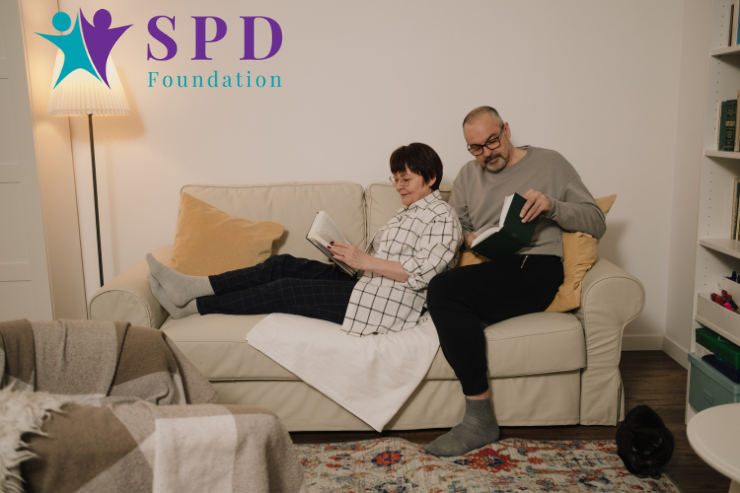As the field of sensory integration (SI) has matured and researchers have learned more about this condition, many people have realized that it is time to clarify the terminology.
Sensory Modulation Disorder:
-
- Overresponsivity: Heightened sensitivity or exaggerated reactions to sensory stimuli.
- Underresponsivity: Reduced responsiveness or delayed reactions to sensory input.
- Sensory Seeking/Craving: Constantly seeking out sensory stimulation to meet sensory needs.
Sensory Discrimination Disorder:
-
-
- Visual Discrimination: Difficulty distinguishing between visual stimuli or perceiving visual details accurately.
- Auditory Discrimination: Trouble discerning between different sounds or understanding speech in noisy environments.
- Tactile Discrimination: Challenges in identifying textures, temperatures, or pressures through touch.
- Gustatory Discrimination: Difficulty recognizing and distinguishing tastes.
- Olfactory Discrimination: Trouble identifying and differentiating between smells.
-
Sensory-Based Motor Disorder:

- Dyspraxia/Motor Planning Disorder: Difficulty planning and executing coordinated movements.
- Postural Disorder: Challenges in maintaining balance and stability.
- Bilateral Integration and Sequencing Disorder: Trouble coordinating movements between the two sides of the body or following a sequence of movements.
Although occupational therapists (OTs) usually understand one another when using the term “sensory integration dysfunction” (sometimes abbreviated DSI), physicians and other health professionals without familiarity with the theory, assessments, and intervention of SI often lack the same knowledge base and may hold a more neurobiological view of the term.
Since physicians are responsible for the total care of the child and in many cases provide a referral for OT services that requires a diagnosis, using a diagnostic term for SI that is more consistent with the physician’s perspective seems appropriate.
At the same time, due to the wealth of literature related to SI in occupational therapy theory and intervention, the continued use of the term SI when applied to those aspects of SI seems appropriate to retain historical and current information published related to the SI frame of reference within the occupational therapy profession.
We are, therefore, proposing to update the diagnostic terminology used in sensory integration. This article describes a proposed system for sensory integration terminology differentiating the disorder from both the theory and the intervention (using occupational therapy with an SI frame of reference).

The new nosology proposed for the diagnostic categories uses Sensory Processing Disorder as a global umbrella term that includes all forms of this disorder, including three primary diagnostic groups (Sensory Modulation Disorder, Sensory Discrimination Disorder, and Sensory-Based Motor Disorder), and the subtypes found within each (see figure below).
Dr. A. Jean Ayres, a researcher and pioneer of this field, coined the term Sensory Integration Dysfunction. She used the term throughout her professional career (1954-1988) to describe atypical social, emotional, motor, and functional patterns of behavior that were related to poor processing of sensory stimuli.
Dr. Ayres chose the term for two reasons. First, it related to her hypothesized theoretical model, which posited an underlying neurological impairment in the ability to transfer sensory information efficiently between sensory systems in the brain.
Second, the term referred to her proposed intervention model, which used sensory stimuli in one domain to affect performance in another domain (e.g., the use of deep pressure/proprioceptive input to decrease over-responsivity in the tactile domain).
During intervention – occupational therapy using a sensory integration frame of reference – activities in two or more sensory domains are actively used concurrently. Often, action in one or more sensory systems (or provision of one or more sensory stimuli) supports the child as she or he makes an adaptive response to a challenging situation involving another sensory system. An adaptive response occurs when a child engages in activities of increasing difficulty and makes a successful response.
Over the years, in practice, the root term “sensory integration” has been commonly used in four different ways. It is used to refer to:
- A theory (sensory integration theory)
- A diagnosis (based on a sensory integration assessment)
- A functional pattern (normal sensory integration abilities)
- A remediation approach (sensory integration intervention)
Notably, none of these uses correspond to the neurobiological meaning of the term sensory integration, which refers to a neuronal process that can only be measured using electrophysiologic recording techniques (e.g., EEG).
Generally referred to as multi-sensory integration, the function depends on the convergence of excitatory signals from multiple sensory modalities onto a) a single neuron, or b) networks of neurons.

Sites, where the convergence of sensory input from different sensory modalities occurs, are present in many regions of the brain, including the cortex.
We selected the term Sensory Processing Disorder for two reasons. First, common use in the neurobiology literature indicates that the clients with this condition have deficits in taking in, interpreting, and responding appropriately to sensory input. Second, the lay use of the word “process” refers to a particular method of doing something, generally involving a number of steps or operations that lead to a specific outcome.
We propose that the word “process” within the context of Sensory Processing Disorder captures the series of steps that are disrupted as a result of impairments in sensory detection, modulation, and/or interpretation in children with this disorder. In this disorder, atypical behaviors occur in the “process” of discerning a sensory stimulus and making a motor or behavioral response.
At this time, we believe that Sensory Processing Disorder constitutes a more effective label for facilitating communication about the condition when OTs are discussing it with other professionals.
In summary, we propose that:
- The condition is referred to as Sensory Processing Disorder.
- The treatment is referred to as Occupational Therapy with a sensory integration approach.
- The theory is referred to as the “Sensory Integration theory based on the work of Dr. A. Jean Ayres.”







